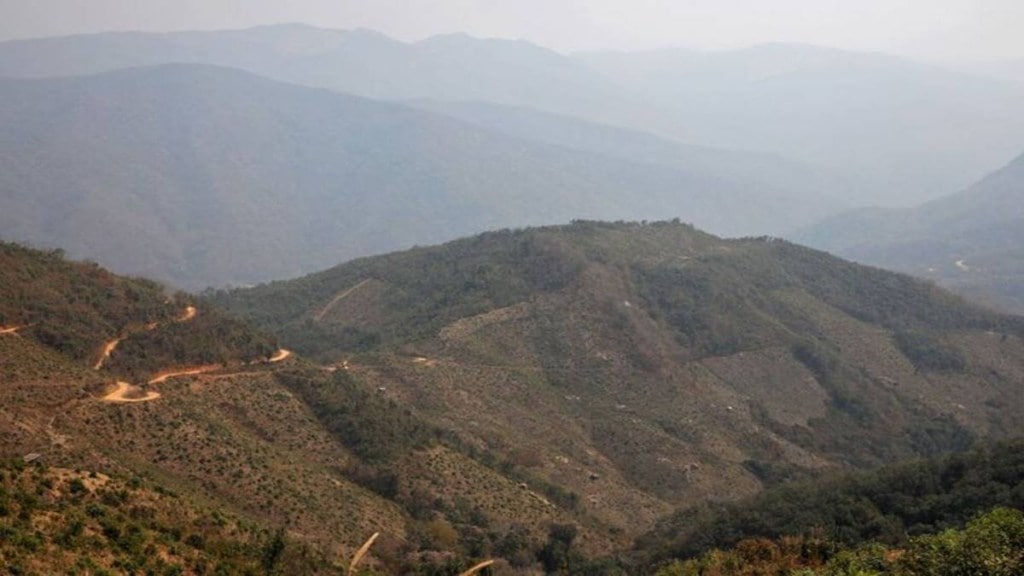By Manish Shukla
Since May 3 last year, over 200 lives have been lost in the violence that erupted in Manipur, displacing thousands of people from their homes to other locations. To curb the violence, a large number of state police and central forces have been deployed. Additionally, strict patrolling is being carried out along the border with Myanmar to prevent insurgents’ groups from entering Manipur and perpetrating violence.
In February this year, the Home Ministry made a key decision to fence the entire 1643 km border along India’s international border with Myanmar to curb the movement of insurgents’ groups involved in cross-border violence. Out of this, 10 km of the border has already been fenced. In areas where fencing is not possible, two pilot projects are underway to install a Hybrid Surveillance System (HSS) to secure the border. Under these projects, 1 km of border each in Arunachal Pradesh and Manipur will be covered. Additionally, the Home Ministry has abolished the free movement regime (FMR) between India and Myanmar, which allowed citizens of both countries to travel up to 20-30 km into the other country without a passport or visa and stay for 24-48 hours. This move aims to ensure India’s internal security and maintain the demographic balance in the northeastern states bordering Myanmar.
The Union Home Ministry’s annual report for 2022-23, published last year, announced the plan to fence the border, citing 201 incidents of violence along the open border, including 137 in Manipur alone.
Security experts believe that fencing the border with Myanmar in the North-East region won’t be easy. The terrain is challenging, with dense forests and hills, requiring the construction of roads for patrolling. Additionally, high-beam lighting would be necessary for night patrols, similar to the India-Pakistan border. A dedicated force is required for monitoring the border. Currently, Assam Rifles are deployed in most areas of the North-East, but most personnel are engaged in internal security duties. The concept of ‘One Border, One Force’ successfully implemented on India’s borders with Bangladesh, Pakistan, and China, needs to be replicated on the India-Myanmar border, which would require special budgetary provisions.
The Border Roads Organization (BRO) has begun work on a smart fencing system, also known as the Hybrid Surveillance System (HSS), along the India-Myanmar border. The system utilizes sensors, cameras, and communication systems to monitor the border, enabling surveillance in areas where fencing is not possible.
However, the decision to fence the border has faced opposition from some states, including Manipur’s Kuki organizations and Mizoram, which are protesting the removal of the free movement regime (FMR) and the construction of fences. Despite opposition, the government is pushing forward with the construction, even deploying central forces to implement its decision. Recently, Mizoram Chief Minister Lalduhoma expressed concern over the unilateral closure of the friendship bridge on the Myanmar-Mizoram border by Assam Rifles.
The opposition has been relentlessly criticizing the Modi government for its handling of the Manipur violence. The opposition made the Manipur violence an election issue during the Lok Sabha polls and created a ruckus in parliament during Prime Minister Modi’s speech, accusing the government of failing to contain the violence.
It’s not that the central government is not serious about Manipur. On June 21, Union Home Minister Amit Shah held a high-level meeting at the North Block to review the current situation in Manipur, attended by the Army Chief, Security Advisor to the Manipur government, Intelligence Bureau (IB) chief, Director General of Assam Rifles, Chief Secretary, Director General of Police (DGP) of Manipur, and senior officials from the Army and Ministry of Home Affairs (MHA).
Union Home Minister Amit Shah conducted a comprehensive review of the security situation in Manipur and instructed authorities to ensure that no further incidents of violence occur in the state. He emphasized the strategic deployment of central forces to restore peace and tranquillity in Manipur, and noted that forces will be increased if necessary. Shah also directed that strict legal action be taken against perpetrators of violence. Additionally, he stated that the Ministry of Home Affairs will engage in dialogue with both Meitei and Kuki groups to bridge the ethnic divide at the earliest. The Government of India has been actively supporting the Manipur Government in strengthening the state’s security situation.
According to security experts, several insurgent groups involved in the violence escape to Myanmar after carrying out their acts. The fencing and heightened surveillance along the India-Myanmar border will help curb the activities of these groups and also enable security forces to take more effective action against insurgent groups operating in other states besides Manipur. According to sources in central intelligence agencies, the fencing will also help cut off external support to militant groups active in the North-East region.
With nearly two decades in Journalism, the author is a n independent journalist. His expertise is in covering a wide range of crucial subjects, including internal security, terror-related cases, Jammu and Kashmir, India-Pakistan relations, and India-China relations.
(Disclaimer: Views expressed are personal and do not reflect the official position or policy of Financial Express Online. Reproducing this content without permission is prohibited.)

